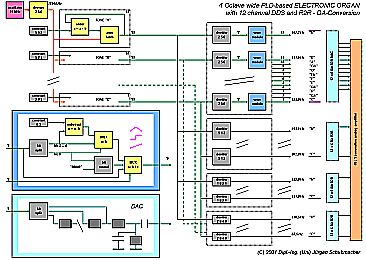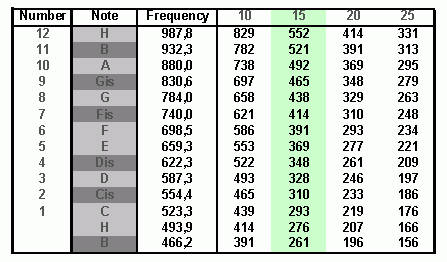| an analog electronic organ made with PLDs and DDS | |||
This is a very old concept of an electronic organ I though of some years ago which uses simple direct digital sound synthesis for tone generation. Several so called "programmable logical devices" = PLDs are used to do this the digital way. As with usual organ concept, the strategy is to generate all 12 required base frequencies with one tone generation unit and then derive the sub tones by simple dividing the frequencies by 2 each to obtain an octave shift. In PLDs this can easily be done by programming. In fact it is only a vector cutout. The sound generator comes with a 10 bit vector so 4 shifts of tone layers are possible. The following wave generation modules use a 7 bit wide digital vector to generate saw tooth, triangle and square waveforms from out of it. This is done by a virtual vector transformation. The vector finally is then transformed into an analog value using a 6 bit DAC consisting of a classic R2R-network. The R2R-network here is used to adjust individual harmonics by distorting it's transmission curve. A little low-pass-Filter smoothens the wave. The final mixing is done by a 12ch-summation amplifier. The design has been initially done for Lattice PLDs, but will be brought to XC4000 PLDs from Xilinx, which are newly available. They are around 30 times larger than the 3020 type, I once started with nearly 10 years ago. 3 of such PLDs are required for one tone bank because of the limited umber of pins and CLBs. Additional functions might still be added, because there are still CLBs free. |
 12 channel tone generation 6 Bit Tone Generation Module R2R- Digital-to-Analog Conversion 4 frequency levels by 3 sub modules possible  frequency setup table |
||
|
|
|||
© 2001 Sound of L.A. Music Productions